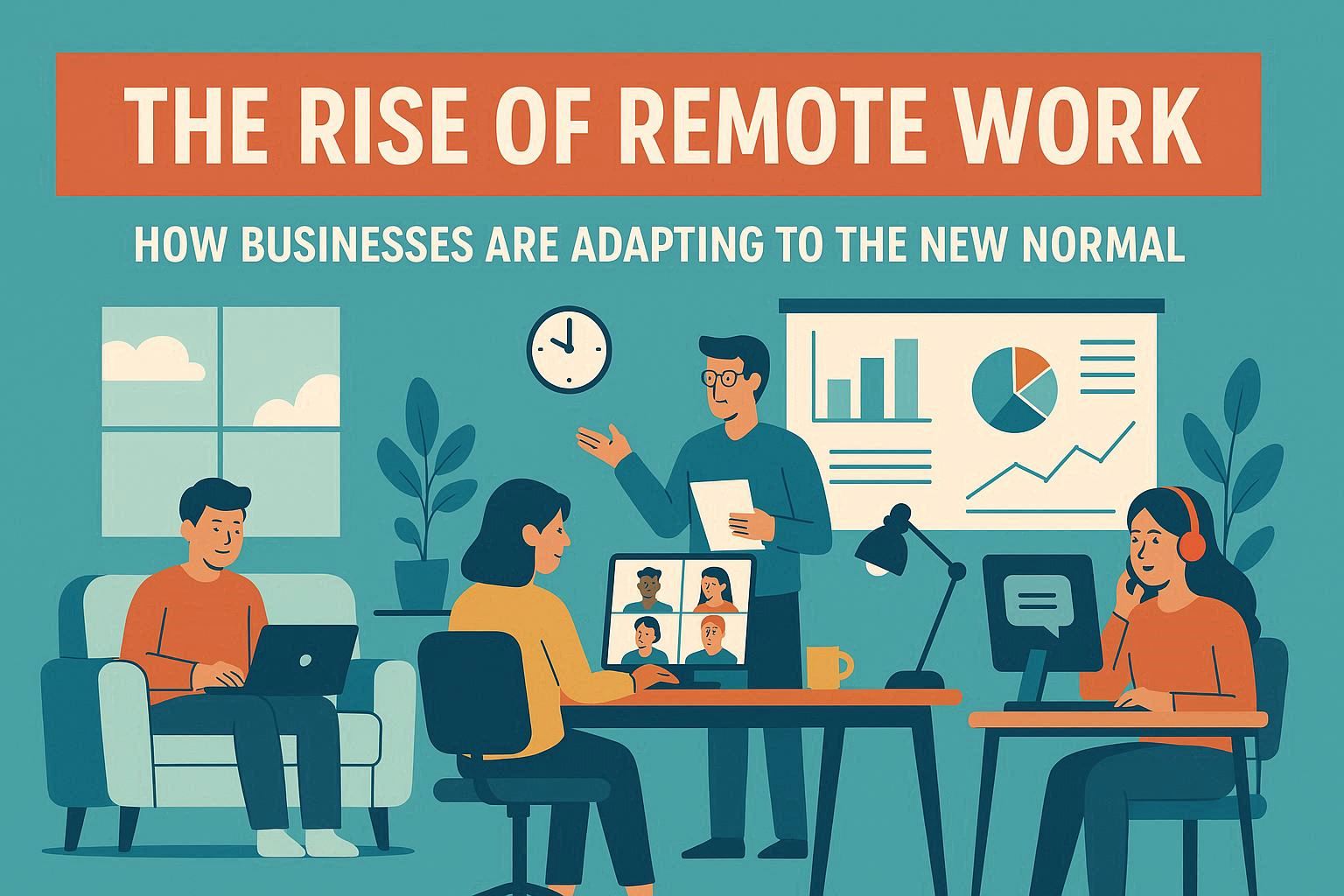The way people work has changed dramatically over the past few years. What was once considered a temporary adjustment during the global pandemic has now become a permanent shift: remote work. For many businesses, adopting remote or hybrid work models has transformed how they operate, interact with employees, and deliver services.
This article explores why remote work is here to stay, the benefits it offers, the challenges it creates, and how businesses can adapt to this evolving workplace landscape.
1. Why Remote Work is Here to Stay
1.1 Shifting Employee Expectations
Employees today value flexibility as much as salary and benefits. Many prefer to work from home, at least part of the week, to balance professional and personal responsibilities. This shift in mindset means companies that resist offering flexibility risk losing talent.
1.2 Cost Savings for Businesses
By reducing the need for large office spaces, utilities, and on-site resources, businesses save significant costs. Some companies have reinvested these savings into technology upgrades and employee benefits.
1.3 Advances in Technology
Tools like Zoom, Slack, Microsoft Teams, and cloud-based platforms have made remote collaboration seamless. These technologies are constantly improving, making remote work more efficient and accessible.
1.4 A Global Talent Pool
Remote work allows businesses to hire talent from anywhere in the world. This widens the pool of skilled workers, helping companies find the right expertise without being limited by geography.
2. Benefits of Remote Work for Businesses
2.1 Higher Productivity
Studies have shown that many employees are more productive when working remotely. Without commuting and office distractions, workers often focus better on their tasks.
2.2 Improved Employee Retention
Companies offering flexible work arrangements tend to have lower turnover rates. Employees who feel trusted and supported are more likely to stay loyal.
2.3 Diversity and Inclusion
Remote work enables companies to employ people from diverse backgrounds, including those who may face barriers to traditional office settings, such as caregivers, people with disabilities, or those living in rural areas.
2.4 Business Continuity
Remote work makes organizations more resilient during crises, such as natural disasters or health emergencies, since operations can continue without physical offices.
3. Challenges of Remote Work
3.1 Communication Barriers
Working across different time zones and without face-to-face interaction can lead to misunderstandings. Clear communication protocols are necessary to keep teams aligned.
3.2 Cybersecurity Risks
With employees accessing company data from multiple locations and devices, businesses face higher cybersecurity threats. Strong data protection measures are essential.
3.3 Employee Isolation
Remote employees may feel disconnected from their colleagues and company culture. Without regular interaction, teamwork and morale can suffer.
3.4 Performance Monitoring
Managers sometimes struggle to measure employee performance without physical oversight. Balancing trust with accountability is crucial.
4. How Businesses Are Adapting
4.1 Investing in Collaboration Tools
Companies are adopting advanced tools for messaging, video conferencing, and project management. Platforms like Trello, Asana, and Jira are becoming standard for team collaboration.
4.2 Redesigning Company Culture
Business leaders are rethinking how to build strong cultures in remote settings. Virtual events, online recognition programs, and flexible policies help foster a sense of belonging.
4.3 Strengthening Cybersecurity
Firms are implementing multi-factor authentication, VPNs, and secure cloud storage to protect sensitive data in remote environments. Employee training on cybersecurity is also becoming standard practice.
4.4 Hybrid Work Models
Many organizations are choosing hybrid setups, combining remote work with periodic office visits. This model balances flexibility with opportunities for in-person collaboration.
4.5 Emphasizing Results Over Hours
Businesses are shifting their focus from monitoring work hours to evaluating outcomes. This performance-based approach encourages trust and empowers employees.
5. Opportunities in the Remote Work Era
5.1 Access to Global Markets
Remote-friendly businesses can expand operations internationally by hiring local experts in different regions, enabling better market penetration.
5.2 Real Estate Flexibility
Companies can downsize office spaces or adopt coworking arrangements, reducing overhead while still maintaining physical presence when needed.
5.3 Innovation in Workforce Management
The demand for remote solutions has spurred innovation in HR technology, employee engagement platforms, and productivity tools. Businesses that adopt these early gain a competitive edge.
5.4 Sustainability Benefits
Remote work reduces commuting, lowering carbon emissions and contributing to corporate sustainability goals. This aligns with growing consumer and investor expectations for eco-friendly practices.
6. The Future of Remote Work
6.1 AI and Automation
Artificial intelligence will play a growing role in managing remote teams, from analyzing productivity data to automating routine tasks.
6.2 Virtual Reality Workspaces
Virtual and augmented reality tools could soon replace traditional video calls, allowing employees to meet in immersive digital environments.
6.3 Evolving Labor Laws
Governments are updating labor laws to reflect remote work arrangements, ensuring employee rights and fair compensation across borders. Businesses must stay compliant with these evolving regulations.
6.4 Employee Wellbeing Focus
The future workplace will place even greater emphasis on mental health, wellness programs, and work-life balance. Companies that support employee wellbeing will have a strategic advantage.
Conclusion
Remote work is not a temporary trend—it is the new normal. Businesses that embrace flexible work models, invest in technology, and build inclusive remote cultures will thrive in this new era. While challenges such as cybersecurity, communication, and employee engagement remain, the benefits of remote work outweigh the risks.
The companies that adapt quickly and strategically will not only retain top talent but also unlock new growth opportunities. Remote work is more than a business adjustment—it is a long-term evolution in how work is done, and those who embrace it will lead the future of business.

